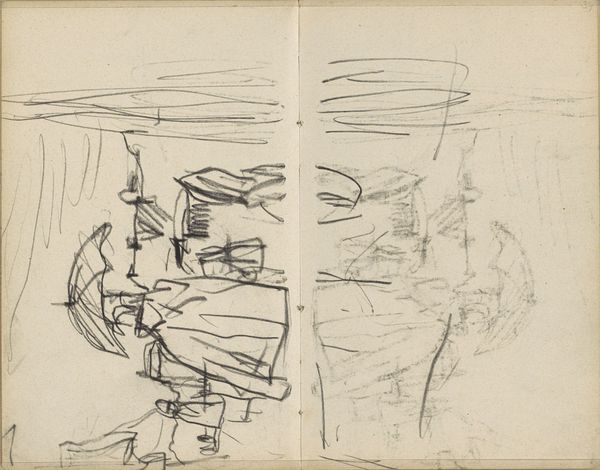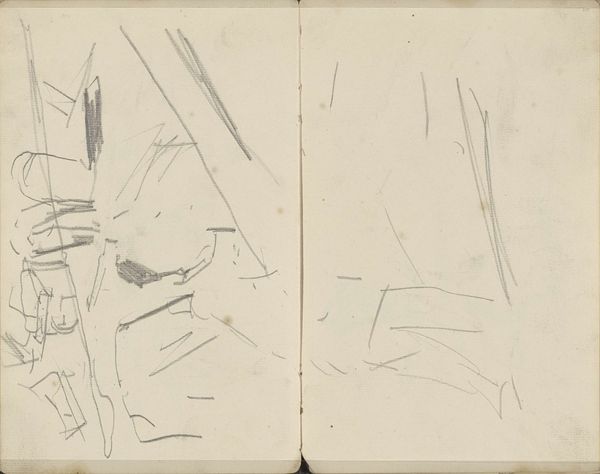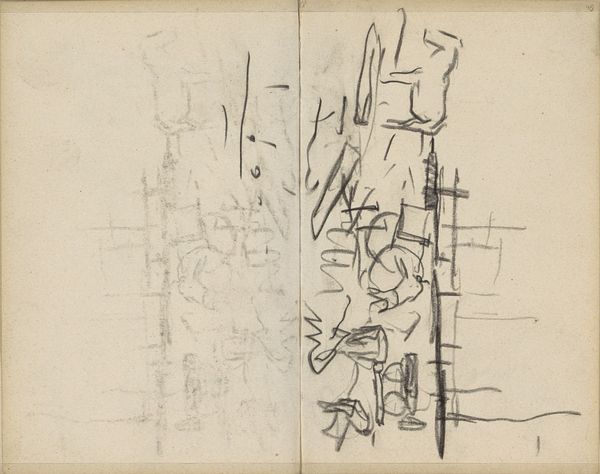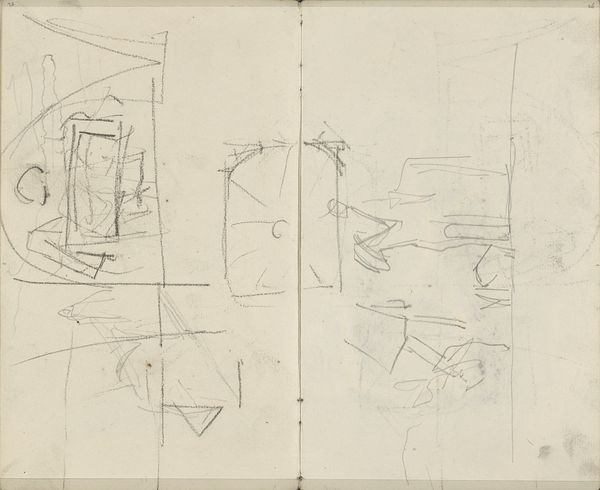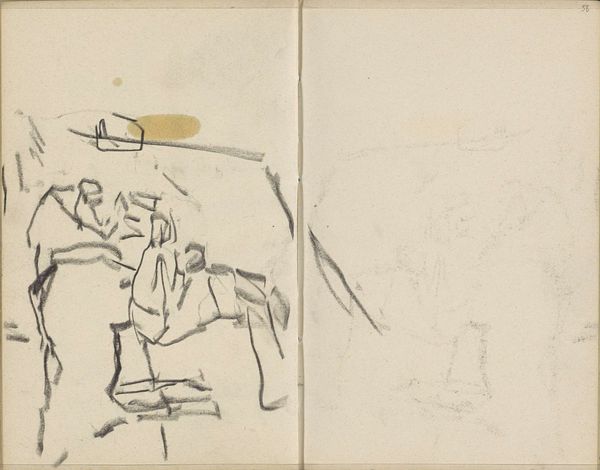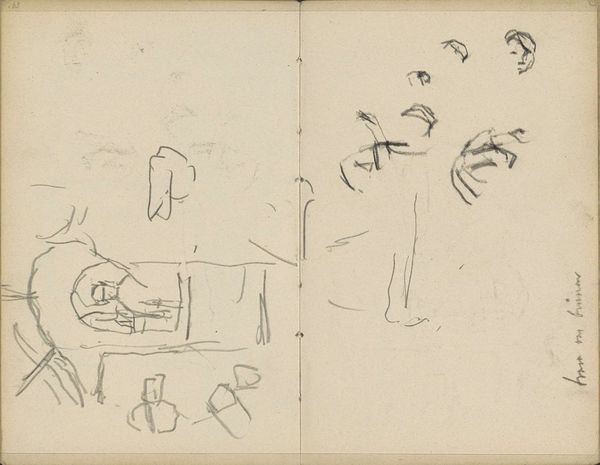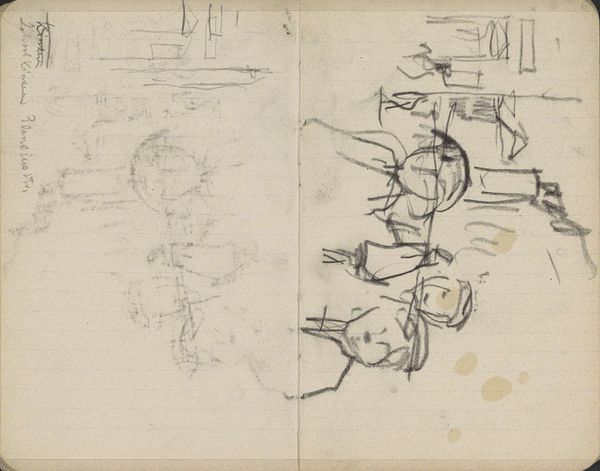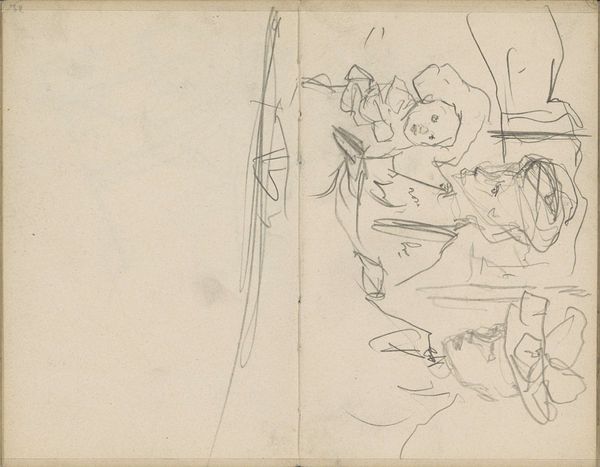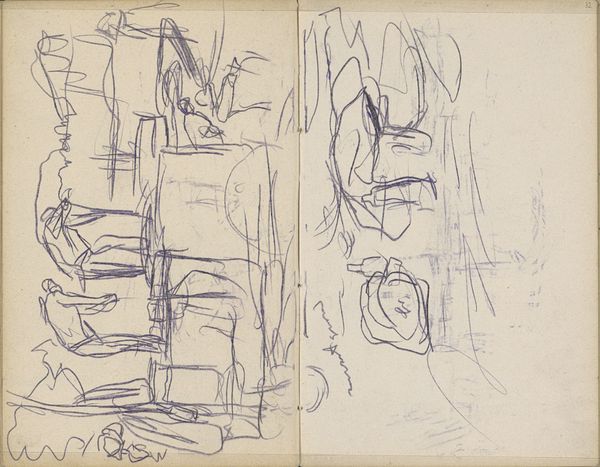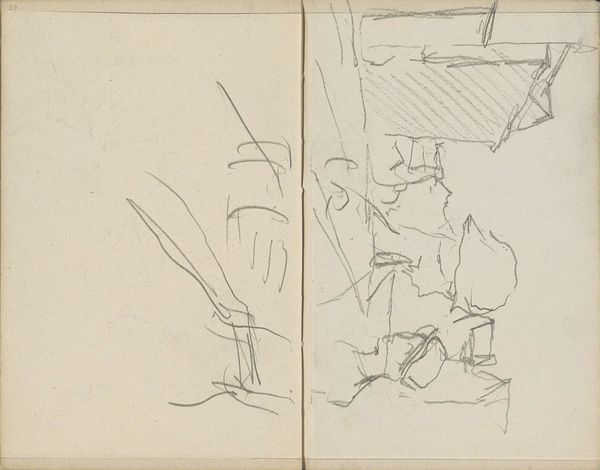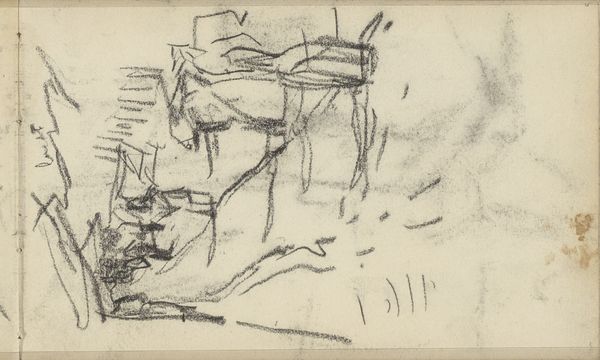
Copyright: Rijks Museum: Open Domain
Curator: Here we have "Twee aangespannen paarden," or "Two Horses Harnessed," by George Hendrik Breitner, made sometime between 1912 and 1919. It's currently held in the Rijksmuseum. The piece is executed with pencil and pen, giving it a very immediate, sketched quality. Editor: You know, seeing this sketch, I feel a strange calmness. It’s just these horses, rendered so simply, almost like a memory fading at the edges of my mind. The open sketchbook format makes you think this captures just a transient glimpse into a street. Curator: Precisely! And this raw, unpolished aesthetic, so typical of Breitner's working method, gives us access to the very act of seeing. The immediacy comes from how drawings like these were part of his preparatory studies—a way of rapidly documenting the urban environment for later paintings. Consider the logistics here: a readily available portable format ready to catch the ephemeral reality of urban life and labor. Editor: It feels so intimate, peering into his sketchbook like this. And that repetition! The faint echo of the horses on the right page almost makes them ghostly, as though one exists in the moment and the other fades back into it. Like the echoes of city noises blending together and dissipating to nothing... it mirrors my mind sometimes, with thoughts appearing as quickly as they leave. Curator: Indeed. What seems 'ghostly' underscores a keen understanding of his artistic processes. These sketches provided reference not just for form, but for movement, light, the dynamism of city life as captured through labor. The use of readily accessible materials like pencil and the sketchbook's own portable utility becomes essential to comprehending how Breitner interpreted his urban surroundings. Editor: And seeing them here, side-by-side in the sketchbook like this, it reminds me that art-making isn’t always this grand, formal event. It’s also the quiet act of noticing, quickly capturing a fleeting feeling. I could go on drawing that same image over and over... each one just slightly different from the other until suddenly something unexpected surfaces. Curator: Agreed. And this piece, this page, encourages us to reflect upon not only Breitner’s observational and technical prowess but the very infrastructure of seeing. How quickly captured images could evolve into paintings that defined, in their own way, Amsterdam. Editor: I think that I will carry this with me now - a reminder to find that calmness even in frenzied life. Curator: A beneficial and interesting conclusion, I think, about his working processes as social context.
Comments
No comments
Be the first to comment and join the conversation on the ultimate creative platform.
